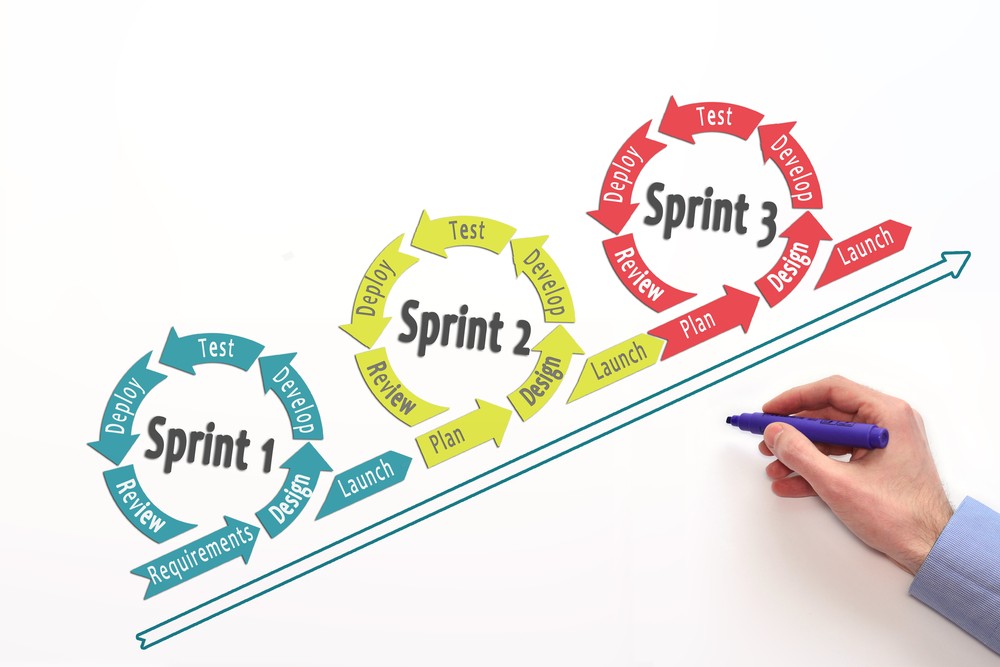Busting the myth of agile marketing
Today’s world, full of data, has never before given this much opportunity for brands to listen to consumers. Ironically, despite this data abundance, the voice of the customer is only incorporated in 11% of marketing decisions. So why is that?
Catch me if you can
This paradox is not instigated by a marketers’ disinterest or lack of empathy. The real enemy is time. The fast-pacing (business) environment requires marketers to keep up constantly. The expiration date of brands is shortening, with products being copied faster than ever and these replicas even outperforming the originals. This while consumers are more informed, having all the information they want within reach. This forces brands to communicate through a variety of touchpoints while at the same time guaranteeing a consistent and relevant brand experience. Yet consumers are becoming less and less loyal, snacking their way through different brands to fulfill their rapidly changing needs.
These altering market and consumer dynamics force marketers to adapt at an ever-increasing speed, making the need for ongoing market and consumer understanding very real. Yet, instead of relying on input coming directly from consumers, they primarily rely on their own gut feeling, talks with colleagues or advice from experts in the matter. Clearly consumer insight management needs to become more agile if it wants to serve the new marketing generation. But what does that mean?
Agile marketing, what it is not
Agile marketing is buzzing and as a result it means a lot of things to a lot of people. Most often it is linked to the agile manifesto and the whole scrum movement teaching us to work in sprints, organize daily stand-ups and define PBIs (i.e. backlog items). But don’t be mistaken. It is not because you have adopted a scrum methodology, that you are (working) agile.
Ditto for the reverse: agile marketing does not equal speedy marketing. Speed is crucial for agile marketing and it does answer the underlying need to adapt to the fast-changing society. Yet speed is only an accelerator. So, what is really at the core of agile marketing?
The agile mindset
Agile marketing involves a constant learning mindset. In essence, it means marketers need to step away from the classic, rigid marketing plans. Instead of thinking big campaigns, large innovation funnels or extensive brand planning, it is about embracing a more adaptive and experimental approach. Crucial to agile is the increment thinking where one first tries to reach what is called a minimum viable product, by dealing with a business challenge in small steps: you try some marketing actions on a small scale, you learn from the experience, results and feedback and only then do you develop the next version. In doing so, the focus lies on self-organizing interdisciplinary teams that have the autonomy to take fast decisions, eliminating the traditional bottleneck effect of over-arching leadership roles.

But there is more to it; one of the crucial elements of agile marketing is the importance of collaborating with consumers in developing more relevant products, services and brands (activations). It is about involving (the voice of) customers in every step of your decision process instead of relying on your own gut feeling. It is about having an ongoing conversation with consumers. It is about moving away from large time-consuming projects where piles of consumer insights end up on company servers never to be touched, to a short-term do mentality surfing the river of tiny insights where consumer feedback is taken further on the spot and turned into real action.
And finally, it is about ceding control to consumers and avoiding the so-called highest-paid person’s opinion or HIPPO approach (i.e. an organization’s reliance on a leader’s instinct rather than on consumer data). Consumers are undoubtedly the best consultants for a brand because, at the end of the day, they are the ones that keep us all in business. Even without a fancy scrum process or speedy robots, one can be agile by putting a consumer at the center of the organization and as such become relevant for that consumer in this fast-changing society. That, in my opinion, is being truly agile.




